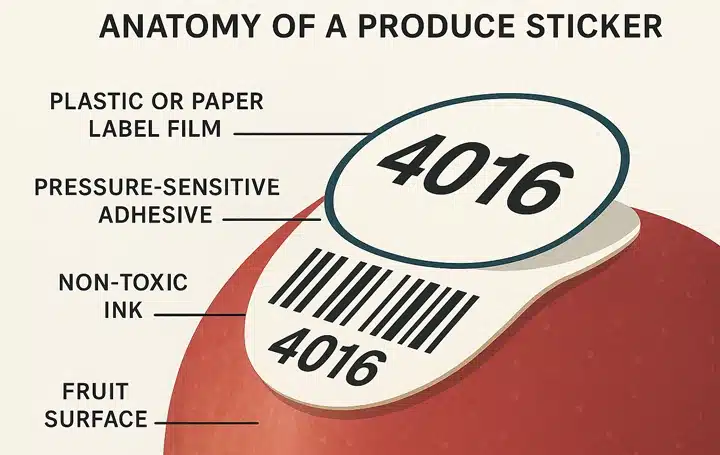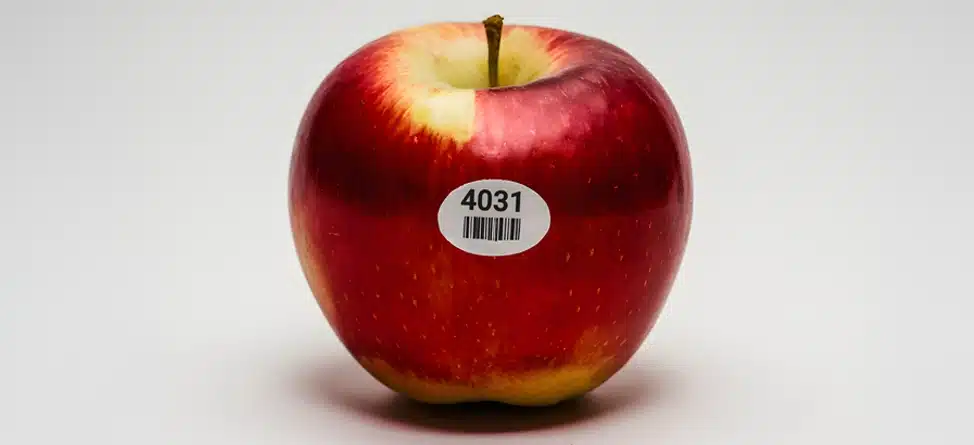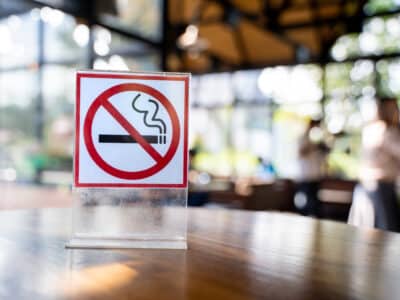Are Fruit Labels Edible? The Surprising Truth
No, the labels on fruit are not considered edible. While accidentally eating one likely won’t harm you, produce stickers are made with non-toxic materials meant for handling, not digestion.
The adhesives and label film are designed to withstand moisture and refrigeration, not your digestive system. Food product labels are regulated, but they’re still not meant to be consumed.
What Are Fruit Stickers Made Of?

Fruit labels are typically made from the following components:
- Label film or paper: Often plastic-based (like polypropylene) for water resistance
- Adhesive backing: Pressure-sensitive and food-safe but not intended for consumption
- Ink or print: Non-toxic and approved for indirect food contact
In other words, these materials are chosen for durability and safety in transit—not edibility.
Why They’re Allowed on Edible Skin
You might wonder: If fruit like apples, plums, and avocados are eaten with the skin, why is it okay to put stickers on them? Here’s why:
- Stickers are FDA-regulated for indirect food contact
- They’re non-toxic, meaning accidental ingestion isn’t dangerous
- They help trace produce origin, variety, and organic status (via PLU codes)
Still, they’re not digestible, so it’s best to remove them and rinse your fruit before eating.
What Happens If You Eat One by Accident?
Accidentally eating a fruit sticker isn’t a medical emergency. It’s happened to just about everyone—biting into an apple too quickly or missing the sticker on a plum. Still, here’s what to keep in mind:
- The adhesive isn’t digestible and can irritate sensitive stomachs
- The label may pass through the body without breaking down
- People with food allergies should still be cautious, especially if fruit is imported
According to the FDA, materials used for produce stickers must be approved for indirect food contact. That means they’re non-toxic and safe in trace amounts, but they’re not tested or designed for digestion.
If you’re ever unsure, rinsing or gently scrubbing produce before eating can help catch stickers before they become an accidental snack.
The bottom line? A sticker won’t hurt you, but it’s better left out of your diet.
Are There Edible Produce Stickers?
What About Dissolvable Options?
While traditional produce stickers aren’t edible, there are dissolvable label options made from water-soluble materials like corn starch.
These break down easily under running water and leave no sticky residue behind. We offer dissolvable labels designed for short-term food use—great for containers, prep items, or any surface where clean removal matters.
Yes, some companies are working on edible or biodegradable alternatives to traditional fruit stickers. These include:
- Edible labels made of potato starch or rice paper
- Laser-etched produce that eliminates the need for stickers entirely
- Water-soluble adhesives and compostable films
However, these are not yet widely used due to cost and supply chain constraints.
Why Don’t Stores Use Edible Stickers Now?
- Durability: Edible options may break down in cold storage or shipping
- Cost: Traditional labels are much cheaper
- Machine-readability: Plastic labels scan reliably at checkout
Until edible options become practical at scale, non-toxic but inedible stickers will remain the norm.
How to Remove Stickers the Right Way
To make sure you’re not eating any adhesive residue, here’s how to remove produce stickers effectively:
- Gently peel the label off under warm running water
- Use your fingernail or a clean veggie brush to scrub off any residue
- Dry and inspect the skin before eating, especially with waxed fruit
If the sticker won’t budge, it’s safer to peel the skin.
National Avocado Day Reminder
Avocados often have stickers right on the skin, but since the skin isn’t something most people eat, the label typically gets tossed with the peel. Still, it’s a smart habit to remove the sticker first, especially if you’re slicing through the skin and into the flesh with the same knife. Any residue left behind could transfer to the edible part of the fruit.
Some people also rinse or scrub the skin as an extra precaution. Want a closer look at how fruit stickers are made, why they matter, and what they’re made from? Check out our 4 facts about fruit stickers.
Labeling Food the Right Way
If you’re packaging fresh produce or prepared foods, using the right label matters. Look for options made with food-safe adhesives and materials that won’t interfere with freshness, storage, or safety. Our food product labels are built for that balance, strong enough to stick, safe enough for indirect food contact.
FAQs
No, fruit labels are not edible. They’re made from non-toxic materials safe for indirect contact, but they aren’t meant to be eaten.
Yes, but it’s not ideal. Accidentally eating one won’t harm most people, but the adhesive and plastic won’t break down in your body.
No, produce stickers are made with non-toxic ink and adhesive, approved for use on edible items.
Because they help with inventory and identification. They’re regulated for safety but must be removed before eating.
Yes, some are in development, including potato starch and rice paper labels, but they’re not yet widely available.
It’s usually harmless. The sticker will likely pass through the digestive system without causing problems.
Peel them under warm water and use a brush if needed to remove residue before eating.




